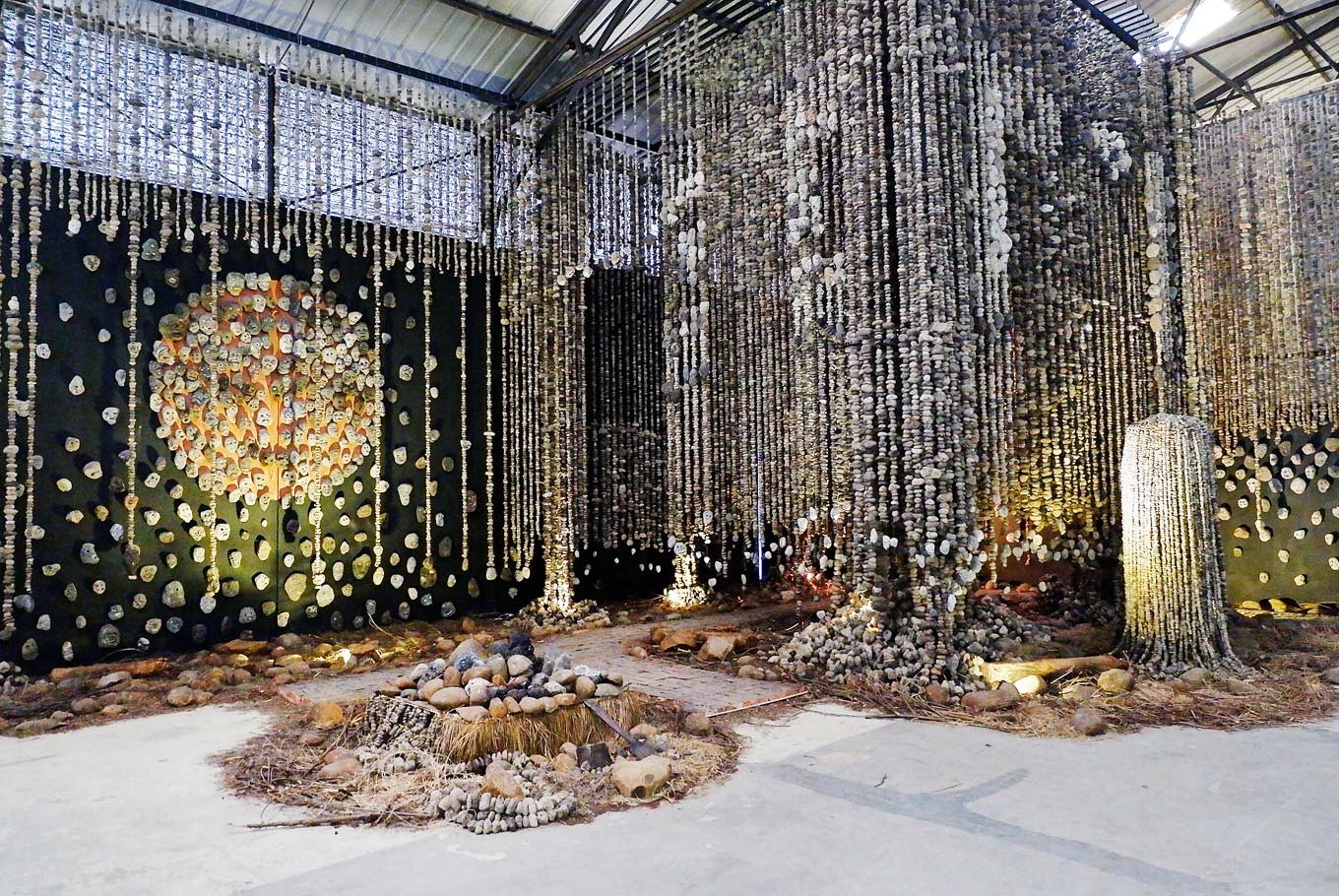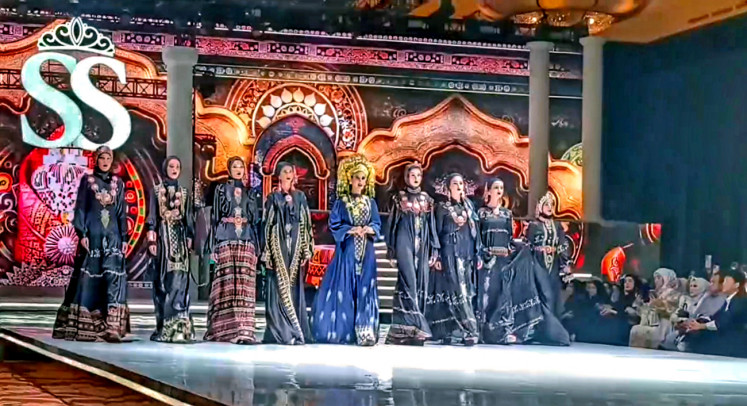I Made Djirna's testimony to the forgotten heroes
I Made Djirna’s testimony to the forgotten heroes.
Change Size
 A majestic tribute: An installation titled Unsung Heroes by I Made Djirna on display at Gudang Sarinah Ekosistem in South Jakarta. The installation celebrates the everyday heroes often forgotten by society because their contributions are considered trivial. (JP/A. Kurniawan Ulung)
A majestic tribute: An installation titled Unsung Heroes by I Made Djirna on display at Gudang Sarinah Ekosistem in South Jakarta. The installation celebrates the everyday heroes often forgotten by society because their contributions are considered trivial. (JP/A. Kurniawan Ulung)
The Jakarta Biennale has opened its doors to the public at Gudang Sarinah Ekosistem in South Jakarta.
Upon entering Hall B, your attention will be drawn to Singaporean Robert Zhao Renhui’s work — a sequence of gigantic photographs of a very old and large tree that collapsed near the artist’s home.
Exploring the hall further, you will discover more captivating works by other artists, including from renowned Balinese artist I Made Djirna. Djirna’s gigantic jungle-like installation will take your breath away, with visitors unable to leave without taking a photograph with it.
The artwork, titled Unsung Heroes, deserves praise. It is not only beautiful and majestic but also took a lot of blood, sweat and tears to complete. The work is made from thousands of rocks the artist collected, sculpted and tied up one by one.
The stones are not like those you can find on the street. They are pumice rocks sculpted to resemble human faces.
“One stone represents one individual,” the 60-year-old Djirna, who crafted the stones at his home in Kedewatan, Ubud over three months, said.
Read also: I Made Djirna: Paints his feelings
“They are the faces of the heroes we may not recognize in daily life, such as farmers and also scavengers,” he added.
Djirna found the pumice rocks scattered along the shoreline between Beraban Beach in Negara and Jumpai Beach in Klungkung.
Pumice, a very light and porous volcanic rock, has numerous benefits, such as improving the condition of soil. However, like trash, it is often neglected along the shoreline.
Djirna collected the stones in a gunny sack slung over his shoulder. People who saw him often thought he was a scavenger.
The artist shows a lot of humility despite having held six solo exhibitions and participated in 24 joint exhibitions at home and abroad since 1978. He was not offended by the ridicule of those who thought he was a scavenger. Instead, it allowed him to experience the hard life scavengers lead.
Like scavengers, people who voluntarily pick up nails from the streets to save motorists from accidents are also heroes for Djirna.
“Heroes are everywhere. But, their stories are never told because the things they do are considered insignificant,” he said.
Djirna refuses to be called an activist. He is a happy-go-lucky person, who does not like to explicitly talk about social and political issues through his artworks.
His life, he says, is like water that flows in a river, passing through the surrounding world, while his works are a pure reflection of his honest feelings that spontaneously follow the flow of his journey.
Djirna still feels the anger of his grandfather, who scolded him for scratching the sanggah (family temple) when he was a child and the happiness he felt when his father brought him to the city to see the fluorescent lights because, at that time, there was no electricity in his village.
He has also never forgotten the fear of when he and his family evacuated during the eruption of Mount Agung in 1963, or when many of his neighbors’ houses were burned down after 1965 because they were accused of supporting the Indonesian Communist Party (PKI).
“I saw the blaze and witnessed people being forcefully dragged [by others]. I hid with three babies under a brick burner. I did not understand what was happening,” he said.
Fascinated by the powerful depiction of good and evil spirits and the turmoil of the human soul, Djirna started his artistic journey as a painter.
Born in 1957, he began to draw at the age of six, inspired by his observations of the details of nature, such as the movement of clouds, dogs fighting and the lines and patterns left by chicken footprints.
“I learned from nature,” he said.
“I raise chickens, ducks, birds, cows, pigs and dogs.”
When he was in junior high school, Djirna’s paintings were strongly influenced by the Young Artist style, which was created and developed by students of Dutch-born Indonesian painter Arie Smit, who lived in Ubud in the 1960s.
After graduating from senior high school, he left Bali for Yogyakarta to hone his skills at the Indonesian Academy of Arts (ASRI) in 1978, which was the first fine arts campus in the country and is known today as the Indonesian Art Institute (ISI).
At that time, he was among the first Balinese artists to study art academically at universities in Java. Preceding him were renowned painter I Nyoman Gunarsa and prolific artist Made Wianta at ISI.
After graduating from ISI in 1985, he became more creative and instrumental. He refused to follow orders and declined to produce artworks that conveyed the identity of his home island through Hindu symbols alone.
Following his heart, he transforms lines, colors, textures and figures into all manner of artistic compositions and expressions using various different media and techniques.
“I also do not want to get trapped into genres like realism, abstract art, naturalism or surrealism. I want to be free [from them],” he said.









